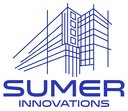The construction industry is changing with the rise of prefabricated buildings. This method allows structures to be built faster, with less waste and more efficiency. Prefabrication is now popular for homes, offices, and factories because it saves money and is better for the environment. Its cost-effectiveness and sustainability make it a smart choice for modern construction.
What is Prefabricated Building?
Prefabricated buildings, also known as modular buildings, are structures that are manufactured off-site in controlled environments and then transported to their final location for assembly. An Architect in Denver plays a key role in designing these buildings, ensuring they are functional, aesthetically appealing, and structurally sound. These buildings consist of pre-made components or modules that significantly reduce on-site construction time and labor costs.
Advantages of Prefabricated Construction
Here are the key benefits that make prefabricated construction faster, cost-effective, and more sustainable, which are:
1. Speed and Efficiency
One of the most significant benefits of prefabrication is the speed of construction. Since modules are built in a controlled environment, there are fewer delays caused by weather conditions or labor shortages. This allows for faster project completion compared to traditional construction methods.
2. Cost-Effectiveness
Prefabricated buildings often reduce overall construction costs by minimizing material waste, optimizing labor efficiency, and shortening project timelines. Bulk material purchasing and standardized production processes also contribute to cost savings.
3. Higher Quality Control
Since prefabrication occurs in factory settings, stringent quality control measures ensure consistent and high-quality construction. This controlled environment reduces errors, material wastage, and construction defects that can occur in on-site building processes.
4. Sustainability and Environmental Benefits
Prefabrication is considered a more sustainable construction method due to the reduced material waste and energy efficiency involved in the process. It minimizes site disruption, lowers carbon footprints, and allows for better resource utilization. Many prefabricated buildings also incorporate eco-friendly materials and energy-efficient designs.
Prefabricated construction is a faster, cheaper, and greener way to build. It will continue to grow as a smart choice for modern construction.
Types of Prefabricated Buildings
Let’s explore the different types of prefabricated buildings and their unique benefits.
1. Modular Buildings
Modular construction involves assembling complete sections of a building off-site and then transporting them for final assembly. These buildings can be permanent or relocatable, making them ideal for various applications, including offices, schools, and homes.
2. Panelized Systems
Panelized construction involves manufacturing wall, floor, and roof panels separately, which are later assembled on-site. This method is commonly used for residential housing and light commercial buildings.
3. Precast Concrete Buildings
Precast concrete involves casting concrete components in a controlled environment before transporting them to the construction site. This method provides durability and structural integrity while reducing on-site labor requirements.
Prefabricated buildings come in various types, each offering unique advantages for different needs. As construction evolves, these methods continue to improve efficiency and sustainability.
Challenges and Considerations
Despite its many benefits, prefabrication does come with some challenges, such as:
- Initial Investment Costs: The upfront cost for setting up manufacturing facilities can be high, though long-term savings offset this.
- Design Limitations: Customization options may be limited compared to traditional construction methods.
- Transportation and Logistics: Transporting large modules requires careful planning and coordination.
While prefabrication has challenges, its long-term benefits make it a worthwhile investment. With advancements in technology, these obstacles are becoming easier to overcome.
The Future of Prefabricated Construction
With advancements in technology, the future of prefabrication looks promising. Innovations such as 3D printing, smart automation, and AI-driven construction processes are further enhancing the efficiency, sustainability, and adaptability of prefabricated buildings. As demand for sustainable and cost-effective solutions grows, prefabrication is set to become a dominant force in the construction industry.
Conclusion
Prefabricated buildings offer a faster, smarter, and more sustainable approach to modern construction. By reducing costs, minimizing waste, and improving efficiency, this method is shaping the future of the industry. An experienced Architect in Denver can incorporate prefabrication techniques to enhance both design and functionality.
As technology continues to evolve, prefabrication will play a crucial role in meeting the growing demand for high-quality, eco-friendly buildings.




